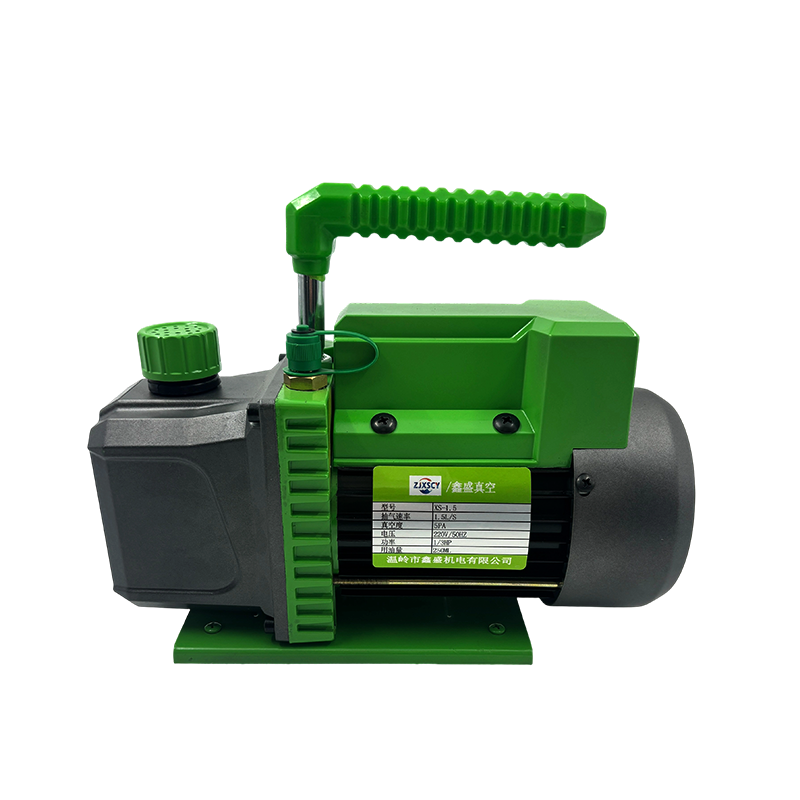Oct 03, 2025
Rotary Vane Vacuum Pump Manufacturers are essential tools in industries such as manufacturing, laboratories, refrigeration servicing, and medical technology. They remove air and gases from sealed environments, allowing processes to run smoothly under controlled conditions. Among the many designs available, the rotary vane vacuum pump is one of the widely used because of its versatility and efficiency. To understand its value, it is helpful to explore its main characteristics and examine the factors to consider when choosing one.

What is a Rotary Vane Vacuum Pump?
This continuous process creates a vacuum within the connected system. Because of their straightforward design and dependable performance, rotary vane vacuum pumps are used in a wide range of fields, from refrigeration maintenance to medical suction systems and packaging machinery.
Characteristics of Rotary Vane Vacuum Pumps
Several key characteristics define rotary vane vacuum pumps and explain their popularity in different applications.
1. Reliable Performance
Rotary vane pumps provide a steady vacuum level, making them dependable for applications that require consistent pressure. Their design ensures a stable flow of air removal, which is essential in laboratory or industrial operations.
2. Compact and Space-Saving
These pumps are relatively small compared to some other vacuum technologies. Their compact size allows them to be easily integrated into portable equipment or smaller systems without sacrificing performance.
3. Two Main Types
Rotary vane vacuum pumps are commonly available in two versions:
Single-stage pumps: Capable of reaching moderate vacuum levels, suitable for everyday tasks such as refrigeration servicing or general industrial applications.
Two-stage pumps: Able to achieve deeper vacuum levels, making them ideal for more demanding uses like laboratory research, freeze-drying, or advanced scientific processes.
4. Lubricated vs. Dry Models
Some rotary vane pumps use oil lubrication to create a tight seal and improve performance. These lubricated pumps often achieve higher vacuum levels and run quietly. Dry models, on the other hand, operate without oil, making them cleaner and easier to maintain in applications where contamination must be minimized.
5. Quiet Operation
Compared to other pump types, rotary vane pumps are generally quieter, particularly when oil-lubricated. This makes them suitable for environments where noise control is important, such as clinics or laboratories.
6. Durability
Rotary vane pumps are built from strong materials and designed to handle continuous operation. With proper maintenance, including oil changes in lubricated models, they can offer long service life.
How to Choose a Rotary Vane Vacuum Pump
Selecting the right pump depends on the requirements of the application. Considering the following factors helps ensure the pump will deliver the desired performance.
1. Required Vacuum Level
The depth of vacuum needed varies by task. For refrigeration servicing, a single-stage pump may be sufficient, while laboratory or scientific processes may require a two-stage pump for deeper vacuums. Evaluating the system’s target pressure ensures the pump meets expectations.
2. Pumping Speed
Pumping speed, often measured in cubic meters per hour (m³/h) or liters per second (L/s), determines how quickly the pump can remove air. A higher pumping speed is useful for larger systems or when rapid evacuation is necessary.
3. Oil-Lubricated or Dry Operation
Deciding between lubricated and dry models depends on the application:
Oil-lubricated pumps are suited for tasks that demand higher performance and quiet operation.
Dry pumps are better for clean applications where avoiding oil contamination is a priority.
4. Application Environment
The setting where the pump will be used can guide the choice. For example, medical applications may favor quieter, cleaner pumps, while industrial environments may prioritize durability and higher pumping speeds.
5. Maintenance and Service Availability
All vacuum pumps require maintenance, whether it is replacing oil, cleaning filters, or checking vanes. Choosing a pump with accessible service support and readily available parts helps minimize downtime.
6. Size and Portability
For mobile technicians, such as those servicing refrigeration systems, a compact and lightweight pump may be preferable. Stationary laboratory or industrial applications may allow for larger models with higher capacity.
Applications of Rotary Vane Vacuum Pumps
These pumps are used in a wide variety of fields, including:
Refrigeration and air conditioning servicing.
Laboratory and research equipment.
Food packaging and freeze-drying processes.
Medical suction devices.
Industrial manufacturing processes.